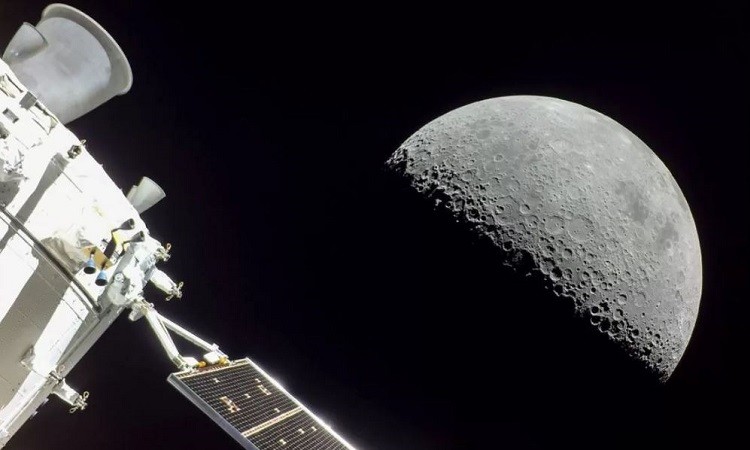
BANGALORE: India's space agency, a groundbreaking trove of scientific insights has been collected from the previously uncharted South Polar region of the Moon by Chandrayaan-3.
The Vikram lander's thermal probe has triumphantly captured temperature oscillations spanning the lunar expanse, encompassing its surface layer, immediate vicinity, and deeper strata. The Indian Space Research Organisation (ISRO) elucidates that the ChaSTE (Chandra's Surface Thermophysical Experiment) initiative endeavors to untangle the thermal intricacies of the Moon's surface by assessing temperature profiles of the topsoil near the pole.
"The temperature probe, equipped with a controlled penetration mechanism capable of delving 10 cm beneath the surface, is embedded with 10 individual temperature sensors," it appends.
The lunar surface witnesses extreme temperature fluctuations due to the lack of atmosphere. ISRO represents these shifts graphically.
"The diagram illustrates temperature fluctuations of the lunar surface and its proximity at varying depths, recorded during the probe's penetration. This signifies the inaugural profile of the lunar south pole. Elaborate investigations are currently in progress," affirms ISRO.
As per ISRO scientist BHM Darukesha, the documented temperature surpasses initial expectations. "We presumed the surface temperature to range around 20-30 degrees centigrade, but it actually reaches 70 degrees," he informs PTI, referencing the graph.
Science Minister Jitendra Singh anticipates that Chandrayaan-3's mission will yield data on the Moon's atmosphere, soil composition, and minerals. This data holds the potential to be a pioneering contribution to the global scientific community, marking a historic first.
"The regolith's low density and superior thermal insulation enhance its viability as a fundamental resource for future habitats, while understanding the wide spectrum of temperature fluctuations is vital for survivability," the minister adds.
ChaSTE, a pivotal instrument integrated into the Vikram Lander, incorporates 10 precision thermal sensors. These sensors are designed to penetrate the lunar topsoil and scrutinize temperature variations. This marks the inaugural effort to examine the thermophysical attributes of the topmost 10 cm layer of the lunar surface.
The Moon's surface experiences considerable temperature fluctuations throughout its diurnal cycle. Minimum temperatures plummet to below -100 degrees Celsius during lunar nights, while maximum temperatures soar beyond 100 degrees Celsius at noon.
The lunar topsoil, extending approximately 5-20 meters in depth, boasts a porous nature. This composition is expected to serve as an effective insulator. Coupled with the absence of atmosphere, this insulation is poised to create significant temperature disparities between the surface layer and the interior of the regolith.
On August 23, the Vikram lander executed a successful touchdown, solidifying India's position as the sole nation to achieve a lunar landing in the South Polar region. This landing site was subsequently christened as Shiv Shakti Point.
Chandrayaan-3 has accomplished two of its three primary objectives: a gentle landing and enabling the rover to navigate the lunar terrain. The third objective, involving direct on-site scientific experiments, is presently underway, according to ISRO's recent announcement.
The Chandrayaan-3 mission carries a budget of approximately ₹600 crore. In a parallel development, the Pragyan rover disembarked from the Chandrayaan-3 Vikram lander and adeptly traversed the lunar landscape. A video unveiled by the Indian Space Research Organisation (ISRO) on Thursday portrays the rover's emergence from the lander using a ramp.